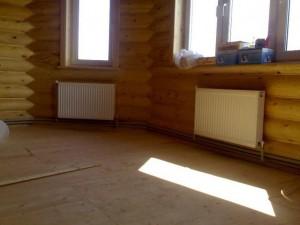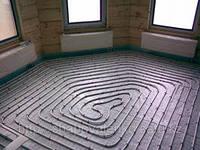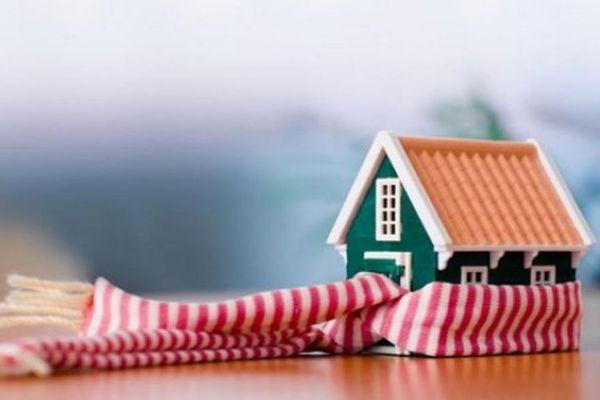Heating design
Building a country house is a serious and difficult business. A lot of trouble, a lot of time is spent, a lot of money, but we strive even outside the city, far from the fruits of civilization, to live with dignity and comfort, not considering ourselves deprived. Therefore, not only the house itself, its volume, the shape of the structure, the number of rooms and utility rooms are of great importance. It is necessary to take into account all known engineering structures. Therefore, the question of how to properly make heating in a private house sounds very relevant today.
It should be noted right away that heating is a fairly costly part of the budget allocated for building a house. Practice shows that it requires up to 20% of all money spent, so we can say that this system is not only expensive, but also quite complex.
Of course, large financial costs can be avoided if simpler methods of heating rooms are dispensed with. And the choice is wide enough. For example, you can install electric heaters in each room, choosing them according to the power that ensures normal living.

Heating a log house
You can install electric convectors - a great option. But keep in mind one point that concerns the supply of electricity to suburban settlements. Blackouts are common here, especially in winter, so you shouldn't rely on electricity.
There is an option with the installation of a fireplace or stove, which can be heated with various types of fuel. For example, firewood, coal, diesel fuel, gas and the same electricity. But again, gas is a luxury that is not available in all villages. There are many problems with diesel fuel, since you will have to organize the supply through the pipeline and ensure its reliable storage.
The easiest way is with wood and coal, but there are many drawbacks here. To maintain the required temperature in the rooms, you will have to constantly add fuel to the firebox, keeping the fire going, which is not very convenient.
Therefore, the ideal option is water heating with the installation of radiators and a boiler. And then the question arises of how to make water heating so that the house warms up evenly, even if it has several floors.
Heating schemes for a private house
Let's start the analysis of water heating with its schemes and immediately determine that there are only two schemes:
- Single-circuit;
- Double-circuit.
What are their differences from each other? First, we immediately note that the first option is best used only for one-story buildings. But the second one is suitable for any country houses.
One-pipe heating scheme

One-pipe heating scheme
One-pipe heating system is the simplest and cheapest. Everything is very simple here. The pipe, through which the coolant will move, departs from the heating boiler and connects all heating radiators in series. After that, she returns to the cauldron. The circle is closed, that is, the movement of the coolant occurs in a closed cycle.
A good scheme, in which there is one rather important nuance, or rather, a minus. In such a system, which is installed in sequential order, the radiators closer to the boiler will always have a higher temperature than those farther away. That is, the air in distant rooms will always be cooler. Of course, you can look at this from the other side, because different people live in the family, for whom the coolness even in winter is bliss.
Two-pipe heating system
Two-pipe heating system
The two-pipe system is more complex, and besides, building it will have to fork out. Two pipes are diverted from the boiler at once. One by one, the coolant rises up to the heating batteries, and the other returns to the boiler. It seems to be the same as in the first case, only the radiators are not installed in series. But as?
The scheme is as follows. A pipe is diverted from the boiler through which hot water rises up. This pipe is usually taken out to the attic where the wiring is done. That is, each battery has its own individual pipe. It is now clear that all radiators will have the same temperature.
Further, a branch is made from each radiator, which is connected to a pipe called "return". It is through it that the coolant returns back to the boiler. The return flow passes through all rooms where heating radiators are installed. I usually lay it under the floor or hide it in the walls. If this is not possible, then you can attach it to the wall surface.
In this scheme, as practice shows, it is necessary to have pipes located in the attic. Therefore, experts recommend installing a heating manifold. What it is?
This is a special device that allows you to regulate the supply of coolant to each radiator. It consists of a pipe structure, where the main pipe protrudes with a diameter of 50 millimeters, it includes a hot water supply pipe. A shut-off device, for example, a valve, must be installed between them.
Pipes that connect to radiators extend from this pipe. Here, shut-off valves are also installed on each circuit. This system allows you to control and regulate the temperature in each individual room.
Dead-end heating system
There is another scheme that specialists do not always use. It is called a dead end. In it, the pipes emerging from the boiler lead in parallel. From each circuit, two branches are led to the batteries: one to the upper inlet is a pipe with hot water, the second to the lower inlet is to the return. This is a very economical scheme, works well but has not caught on.
Nuances of water heating

What should you pay attention to when installing the heating system? First of all, you have to decide on the type. There are two types that differ from each other only in the presence of a circulation pump.
If it is not in the heating circuit, then it is a gravity system. How is it beneficial, and what disadvantages?
- First, it's a cheap option.
- Secondly, there is no need to use electricity to run the pump.
- Thirdly, any type of boiler can be used.
But this scheme has a little more disadvantages:
- low efficiency, which means that the efficiency of the system is lower.
- uneven distribution of the coolant.
- a more costly event, because you will have to install an expansion tank and use metal pipes. And metal is more expensive than plastic, plus gas welding, which is also not cheap.
Many people may ask the question, why are metal pipes necessary? The thing is that with such a system, you will have to supply a coolant with a higher temperature, and the plastic may not withstand it. This is especially true of the area near the boiler.
It's different with a circulating pump. This is a more efficient way of distributing hot water throughout the heating system. In addition, fuel consumption can be reduced by evenly supplying heat. And this is already saving. To this can be added the fact that the diameter of the pipes used can be reduced. For example, in a system with natural circulation, it is necessary to install pipes for wiring with a diameter of 25 millimeters, for a riser 32 millimeters. In the forced system, respectively, 20 and 25. Also savings.
Heating "warm floor"

Can this view be used as the main one? Yes. Today, all experts unanimously say that a "warm floor" is a very effective scheme. It is not only low-cost and easy to install and operate, but also economical. In addition, with its help, you can create very comfortable conditions inside the premises, which have a good effect on human health and well-being.
No convection, always warm floors on which you can walk barefoot, no need to cover them with expensive carpets and constantly clean them.
In all respects, it is the most efficient form of heating in private homes today. In addition, the "warm floor" system can be installed under almost any flooring materials - be it ceramic tiles, parquet or laminate.
It is important to take into account the heat transmission coefficient of the floor covering. For example, a tile has a higher level, which means there is no need to use a powerful system. Wood floors have less of it, so you should take this into account and install more frequent contours, thereby increasing the heat transfer of the system.
An important condition is to choose the correct scheme and to carry out the installation correctly. Any, even a small, mistake will lead to the fact that the heating will work poorly. Therefore, the recommendations of specialists will have to be taken into account if all work is done by hand.
Conclusion

We insulate the house
So, answering the question of how to properly make heating in a private house, you can come to the following conclusion. The most important thing is to choose the right scheme when it comes to water heating. But keep in mind that in such a matter as installing a heating system in a country house, there are no trifles. Everything is important here: the type of heating boiler, and the type of radiators, and the pipes used in the scheme, and shut-off valves, and even the type of fuel on which the boiler will operate. After all, even this will depend on the budget. Why?
Judge for yourself. If liquid fuel is used, then a separate room for storing diesel fuel will have to be arranged for it. And here you need to adhere to fire regulations. If coal or firewood is used, then they will also have to be stored either under a shed or in a separate room. That is, there are more problems with such types of fuel.
Similar posts



